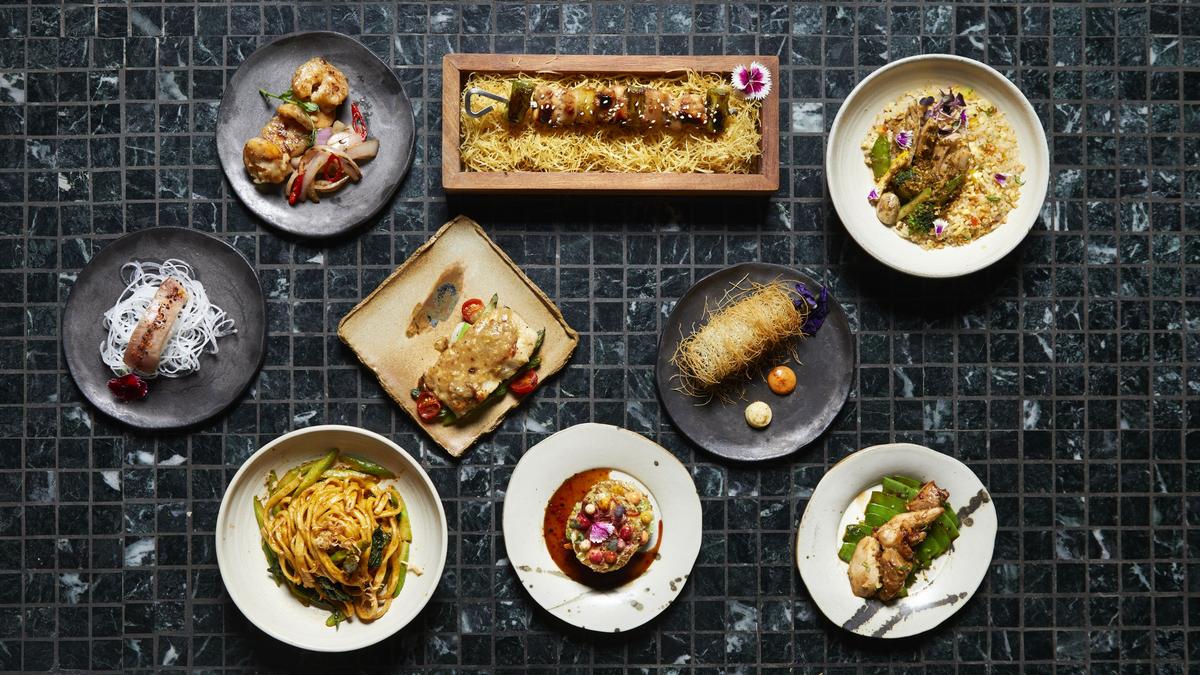Omakase, the archetypal antithesis of the French-style à la carte menu, is taking India’s food and beverage industry by storm. With restaurants and bars kowtowing to the Japanese dining concept that quite literally translates to ‘I leave it up to you’, Omakase has takers from Amritsar to Bengaluru.
Customarily, an omakase experience demands the diners to relinquish control over their choice of dishes and allows chefs to dish out elaborate courses made with seasonal produce at a fixed price. According to Encyclopedia Britannica, “the omakase tradition began in Japan in the 1990s to accommodate nouveau riche customers who knew little about sushi and seafood and did not want to reveal their lack of knowledge”. The term was coined in 1967, but the trend piqued my curiosity in 2024, when two of the three restaurants and bars I visited whispered the magic word.
Omakase counter at Shiso
| Photo Credit:
Special arrangement
For instance, pan-Asian restaurant Shiso flung its doors open to Amritsar, last year in June. Amidst teppanyaki (a post Second World War style of Japanese cooking with iron griddle) and yakitori (Japanese-style skewered chicken), their omakase counter stood out. The memory of a friend and I savouring nigiri and laphing while taking swigs of whisky-based cocktail called Trippy Fungi, still reminds me of the comfort that the counter offered. Predominantly, it ruled out any chance of an argument that could break out while placing the order; and clearly, the chefs stood in the firing line if one did not relish the dish. To Vansh Aggarwal, the co-owner of Shiso, my observations are amusing. “We wanted to have a live-cooking space. So, at the omakase counter, we decided to have sushi, teppanyaki and yakitori made right in front of our guests,” he says.
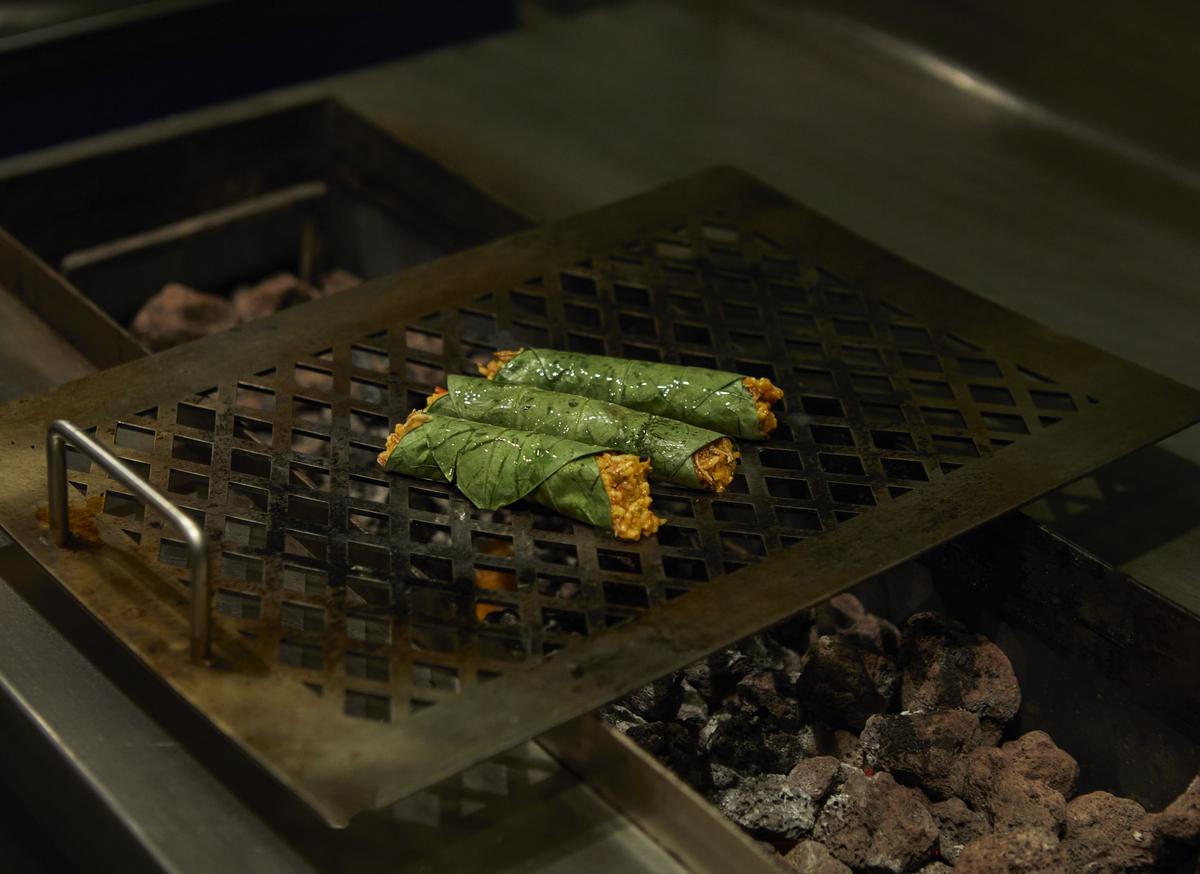
Thai betel leaf roll from Laos
| Photo Credit:
Special arrangement
The omakase menu at Shiso features 12 dishes and three cocktails. “We have eight to 10 courses, priced at ₹4,500 per person. Every course covers one dish from an Asian country — Thai betel leaf roll from Laos and Malay tofu curry from Indonesia to China’s dan dan udon and Japan’s karaage chicken,” informs Vansh.
Wildcard versus menu card
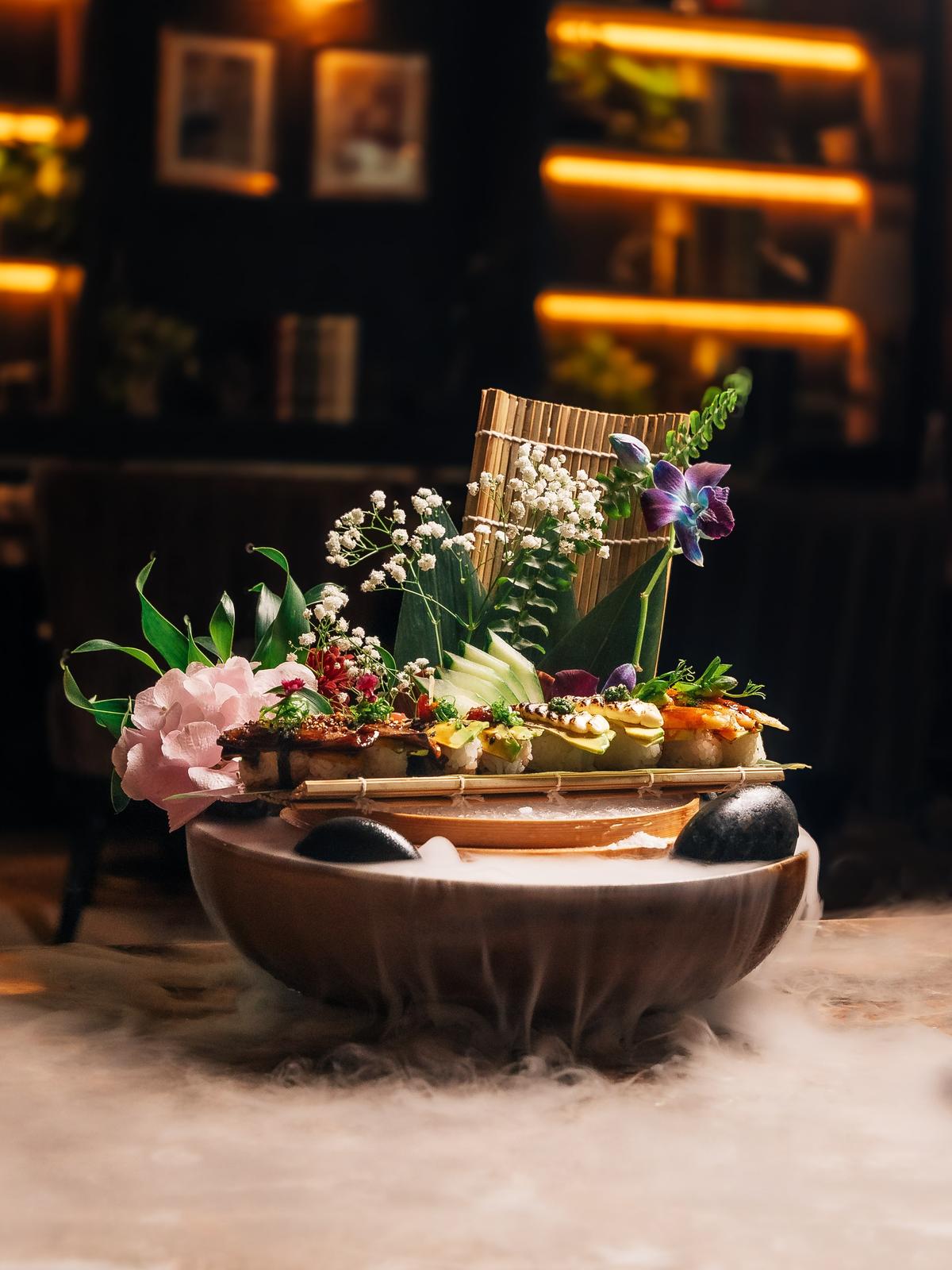
Koishii’s signature vegetarian nigiri
| Photo Credit:
Special arrangement
Typically, omakase comprises traditional Japanese food, like oysters, bluefin tuna and sea urchin, but chefs may also combine Asian cuisine with other culinary traditions. The selection of dishes is based on the restaurant’s or the chef’s culinary philosophy. In that sense, Nikkei cuisine takes centre stage at Japanese-Peruvian restaurant Koishii at The St. Regis, Mumbai.
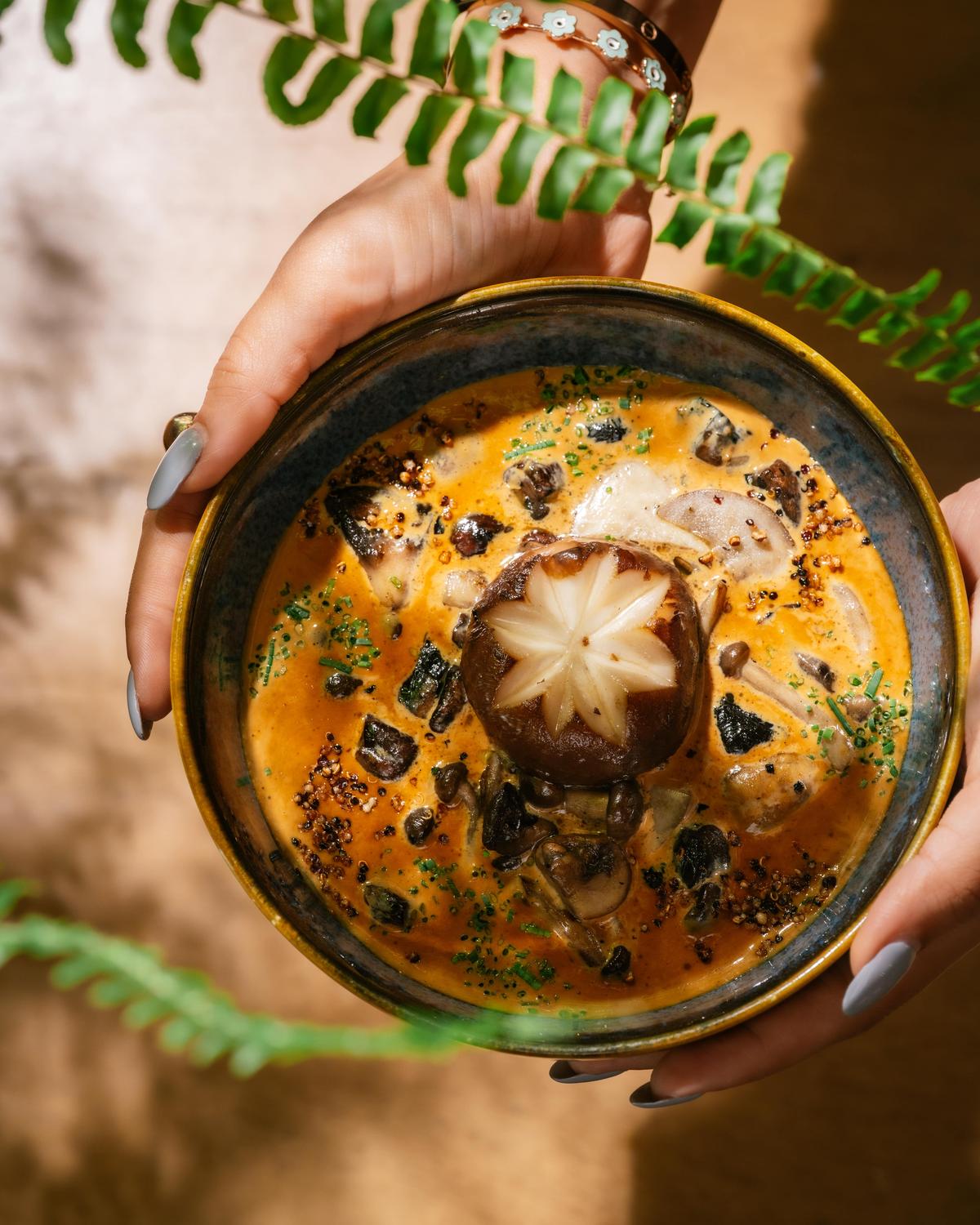
Forest mushroom wok served at Koishii
| Photo Credit:
Special arrangement
Chef Paul Kinny, culinary director of The St. Regis, explains: “When Japanese migrants went to Peru, they married their cooking techniques with Peruvian ingredients; that’s how Nikkei was born. Koishii’s omakase menu comprises all its signature dishes. It includes vegetarian, meat-based and mixed options in a meal that comprises ceviche (a dish consisting of fish or shellfish marinated in citrus and seasonings), tiradito (a Peruvian dish of raw fish slices marinated in a spicy citrus sauce), sushi, robata grill (Japanese fireside-cooking), mains and desserts. Ceviche is different from Japanese sashimi because its dressing is done with leche de tigre (that translates to tiger’s milk), which essentially is a spicy, citrus-based marinade.”
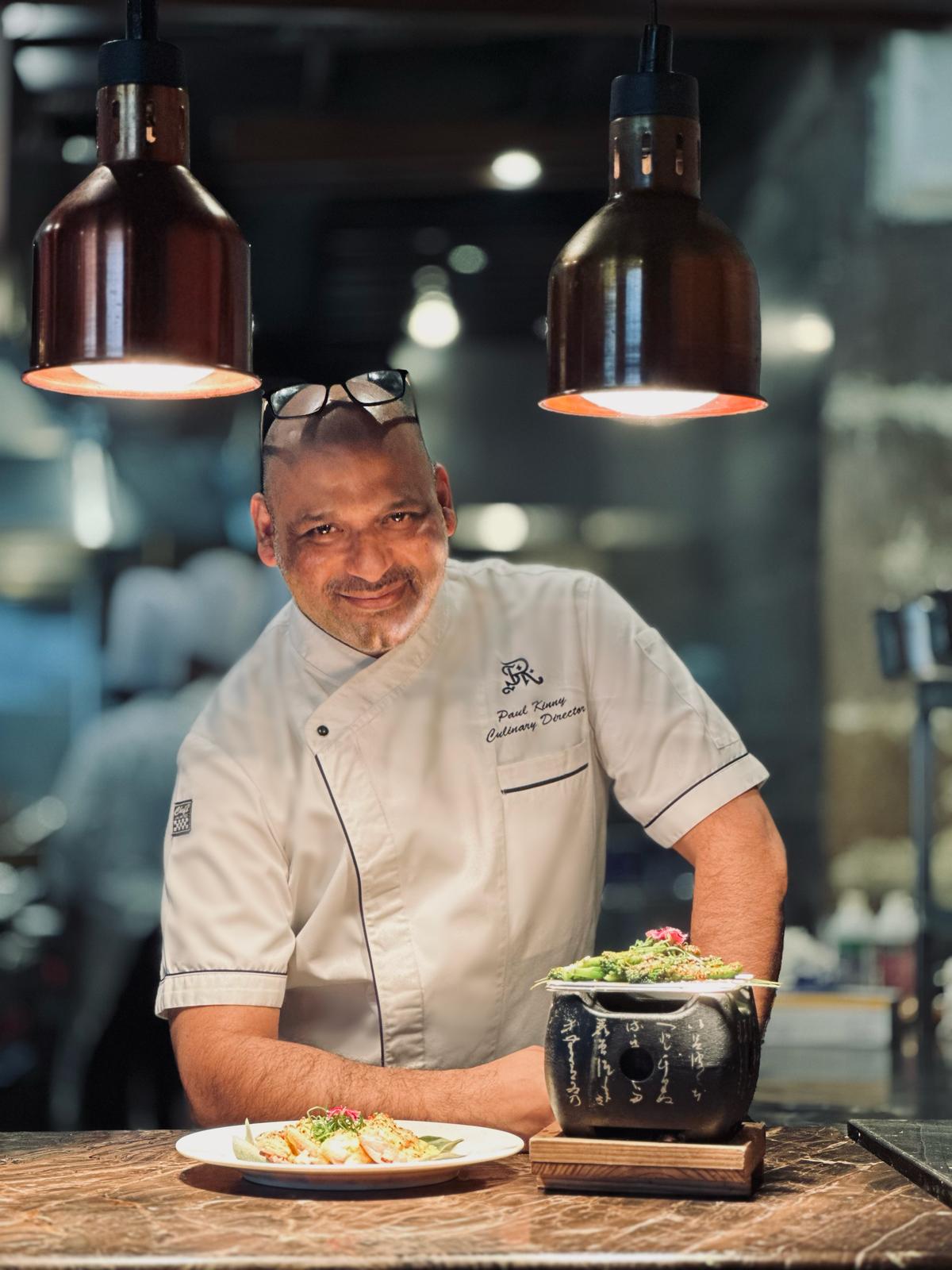
Chef Paul Kinny, culinary director of The St. Regis Mumbai
| Photo Credit:
Special arrangement
Koishii’s omakase offerings, available till April, include dishes like forest mushroom and chicken tropical sour as part of robata grill, chupe prawn ramen, salmon salad nikkei, yellowtail nikkei for ceviche, unagi maki roll for sushi, asado negro nikkei for mains and desserts like inka gold (made with raspberry caviar, 64%, dark chocolate, chocolate mousse and sable cracker base). While the vegetarian menu is priced upwards of ₹4,900 per person, the non-vegetarian menu starts at ₹6,900.
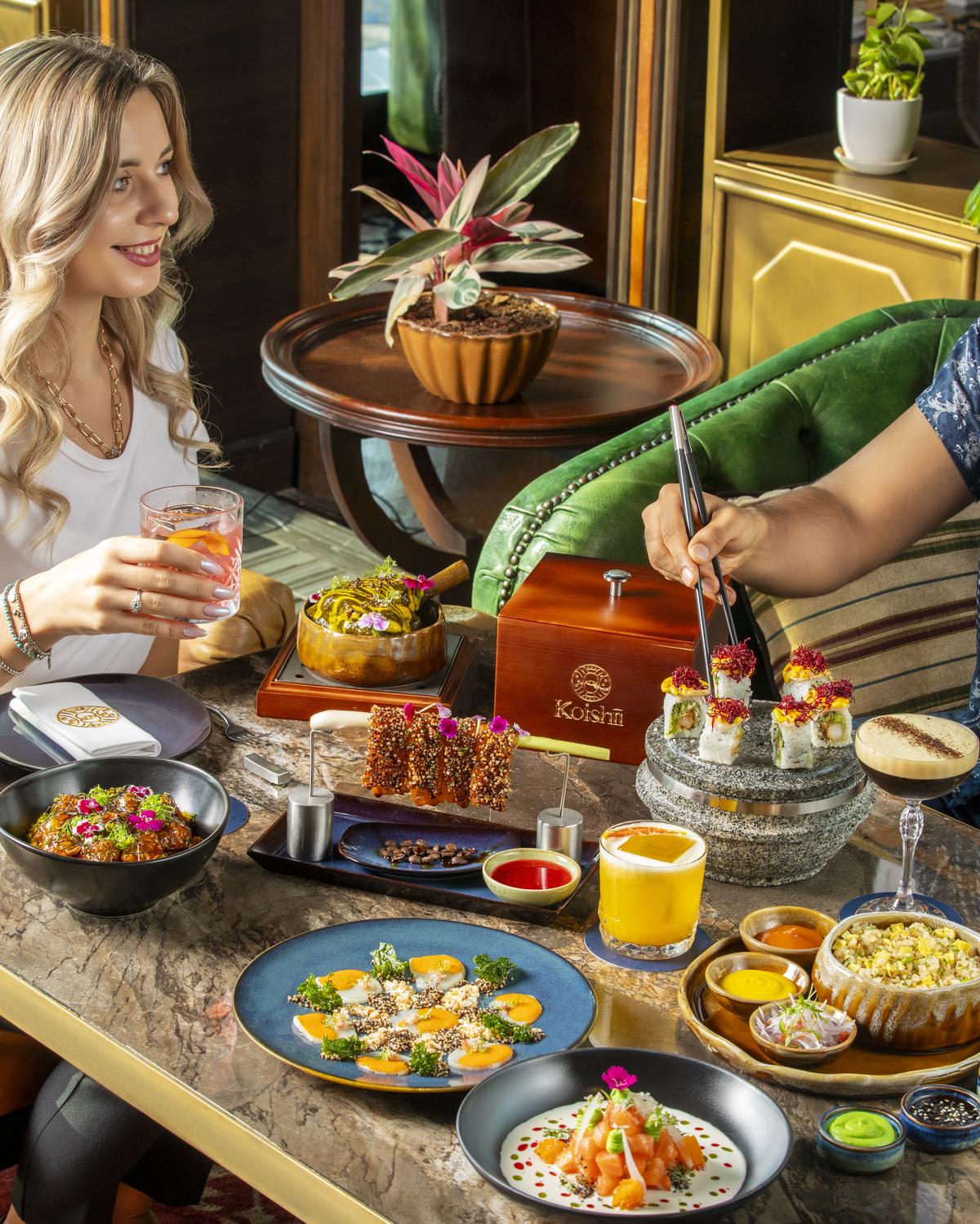
Koishii’s omakase dining expereince
| Photo Credit:
Special arrangement
Both, Shiso and Koishii are fairly new restaurants, with Koishii turning three this year, but Chef Mayank Kulshreshtha, the executive chef of ITC Grand Chola, Chennai, observes that omakase garnered eyeballs about a decade ago. “Most five-star restaurants, including ITC, serving Japanese cuisine, embraced omakase in the 90s, but in the last 10 years, it has become a trend,” he says. He credits the dining concept’s popularity to the availability of Japanese ingredients and access to cooking techniques. “Besides, the political and business camaraderie between India and Japan has grown over the years. A lot of people are now travelling to Japan, following the food cults on social media and trying new cuisines, which may have sparked their interest in Japanese food, especially omakase,” he avers.
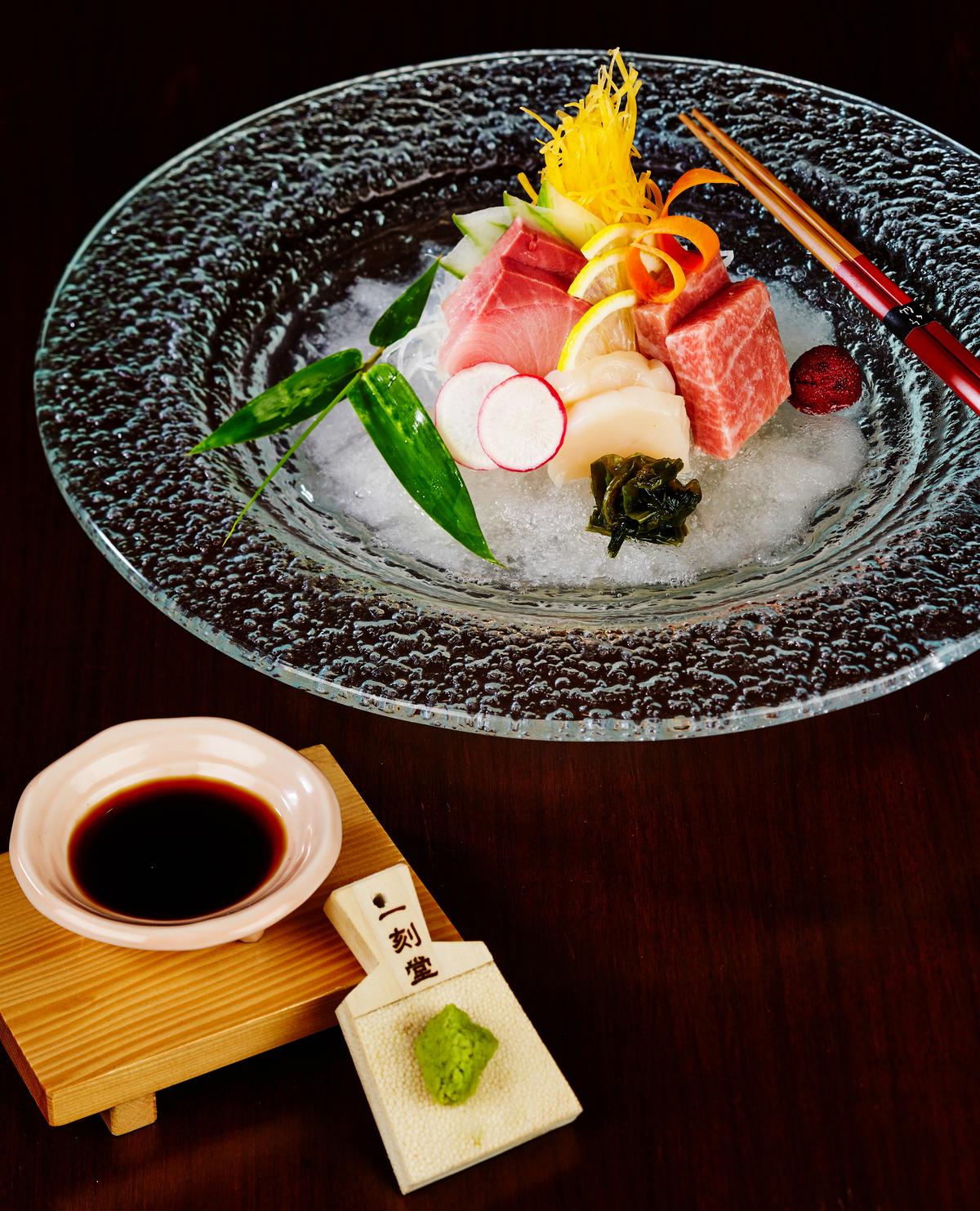
Premium sashimi at ITC
| Photo Credit:
Special arrangement
ITC’s omakase offerings include sashimi, robatayaki grill, hotate katsu and nimono (traditional dashi stock simmered with kombu kelp and bonito flakes). “Generally, an omakase experience has seven to 20 courses. In our pan-Asian restaurant, an omakase meal costs somewhere between ₹15,000 and ₹20,000 per head,” he adds.
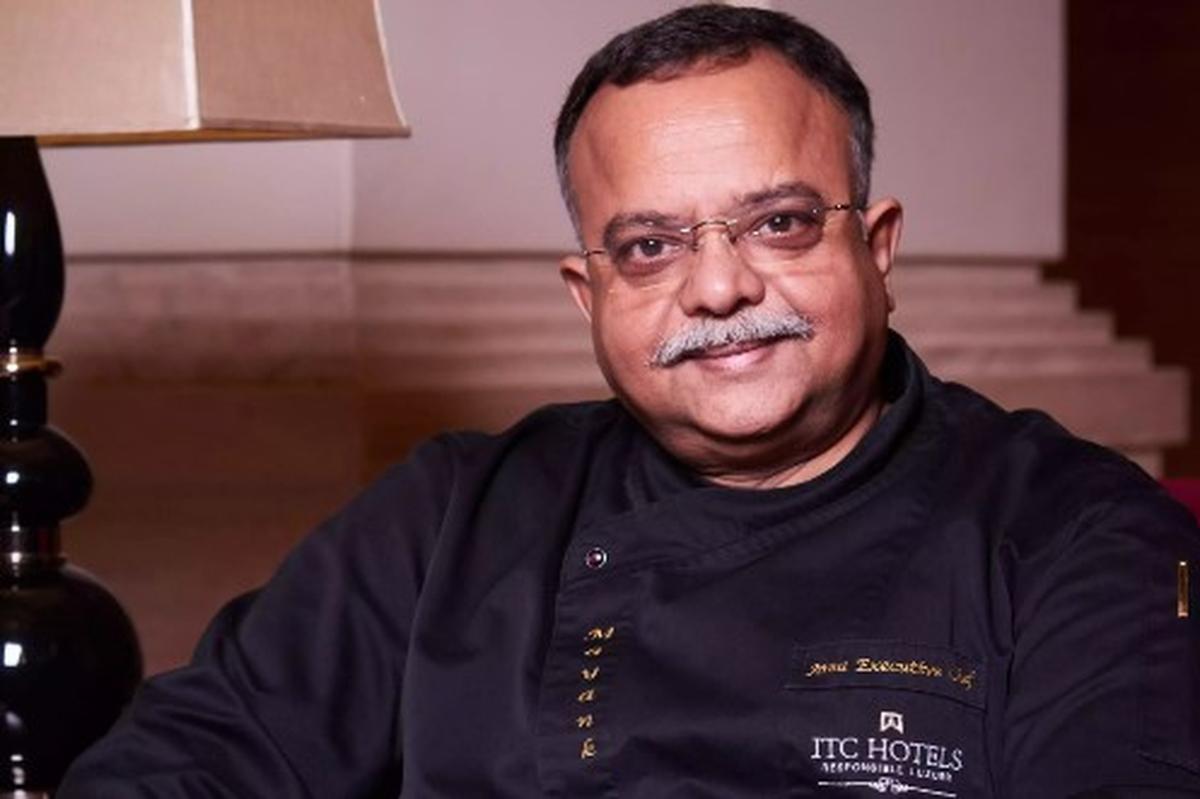
Chef Mayank Kulshreshtha, the executive chef of ITC Grand Chola, Chennai
| Photo Credit:
Special arrangement
Selling like hot cakes!
Last year, in August, a multi-city chain of pan-Asian cuisine, Nasi and Mee, introduced omakase experience at its outlet in Bengaluru. Dilip Krishnan, the co-founder and CEO (India) of Foodsta Kitchen which owns and operates Nasi and Mee, observes that the omakase experience has picked up slowly but anyone who experienced it has had only good things to say. “We have a six-to-eight-seater live sushi bar with just one 45-minute dinner slot six days a week (Tuesday to Sunday), and we’ve had a few sold-out weeks. On average, we’ve had two-four people and most of them have come as couples celebrating a milestone or for some intimate or new dining experience,” he notes. The restaurant takes omakase bookings on 24-hour reservation deadline, imports a whole Norwegian salmon for its carpaccio and nigiri, and procures eels from Japan.
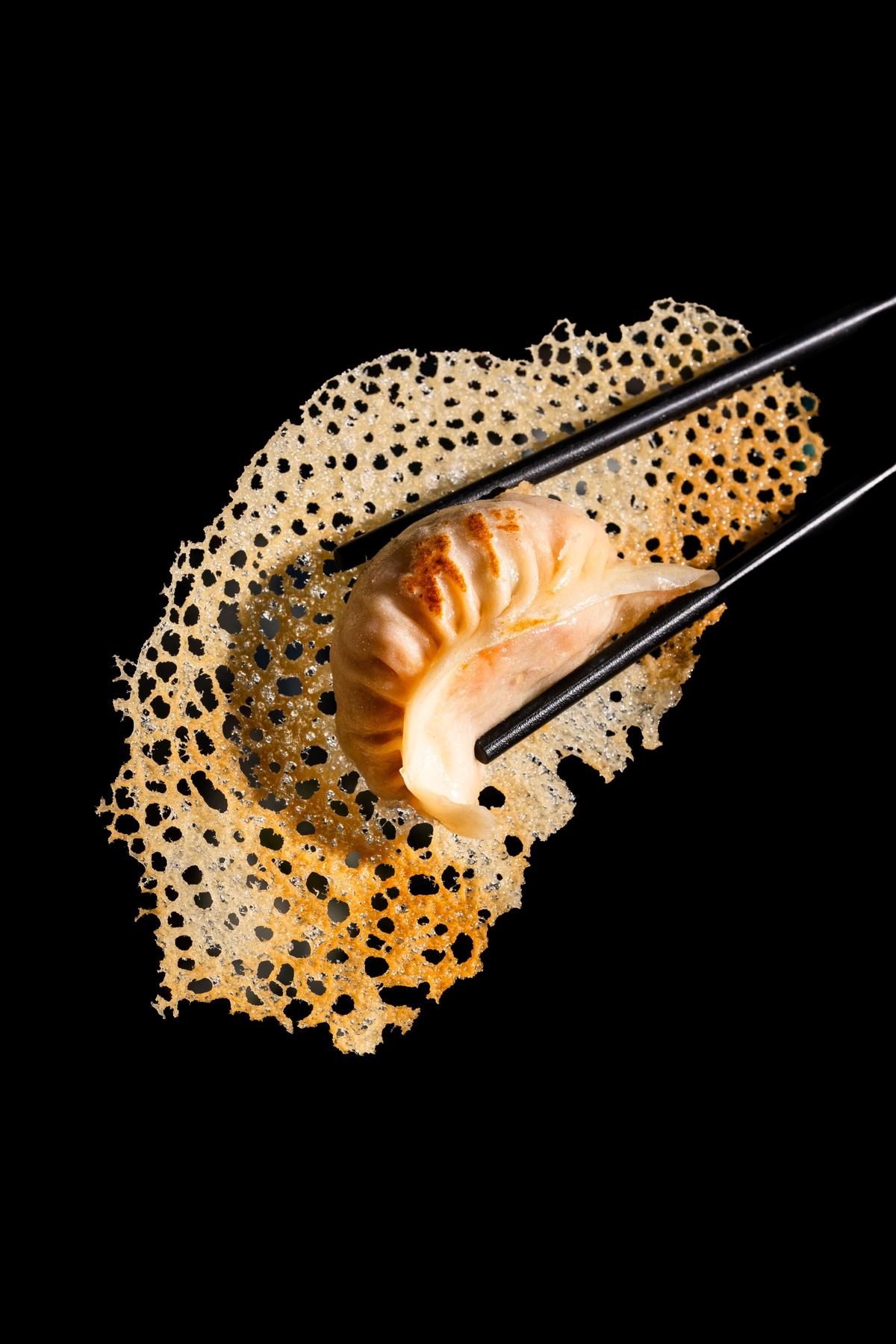
Gyoza on Nasi And Mee’s omakase’s menu
| Photo Credit:
Special arrangement
The seasonal menu, packed with surprise element may have also accounted for the concept’s popularity. Much recently, Shiso pulled off the courageous stint of introducing Kashmiri wazwan, a week-long pop-up it hosted, to its omakase counter. “We get eight to 10 tables trying Omakase, in a month. The bookings are made for special occasions. But having an omakase experience establishes the food-forward ideology of our brand. So, it works as much for us as it does for our guests,” says Vansh.
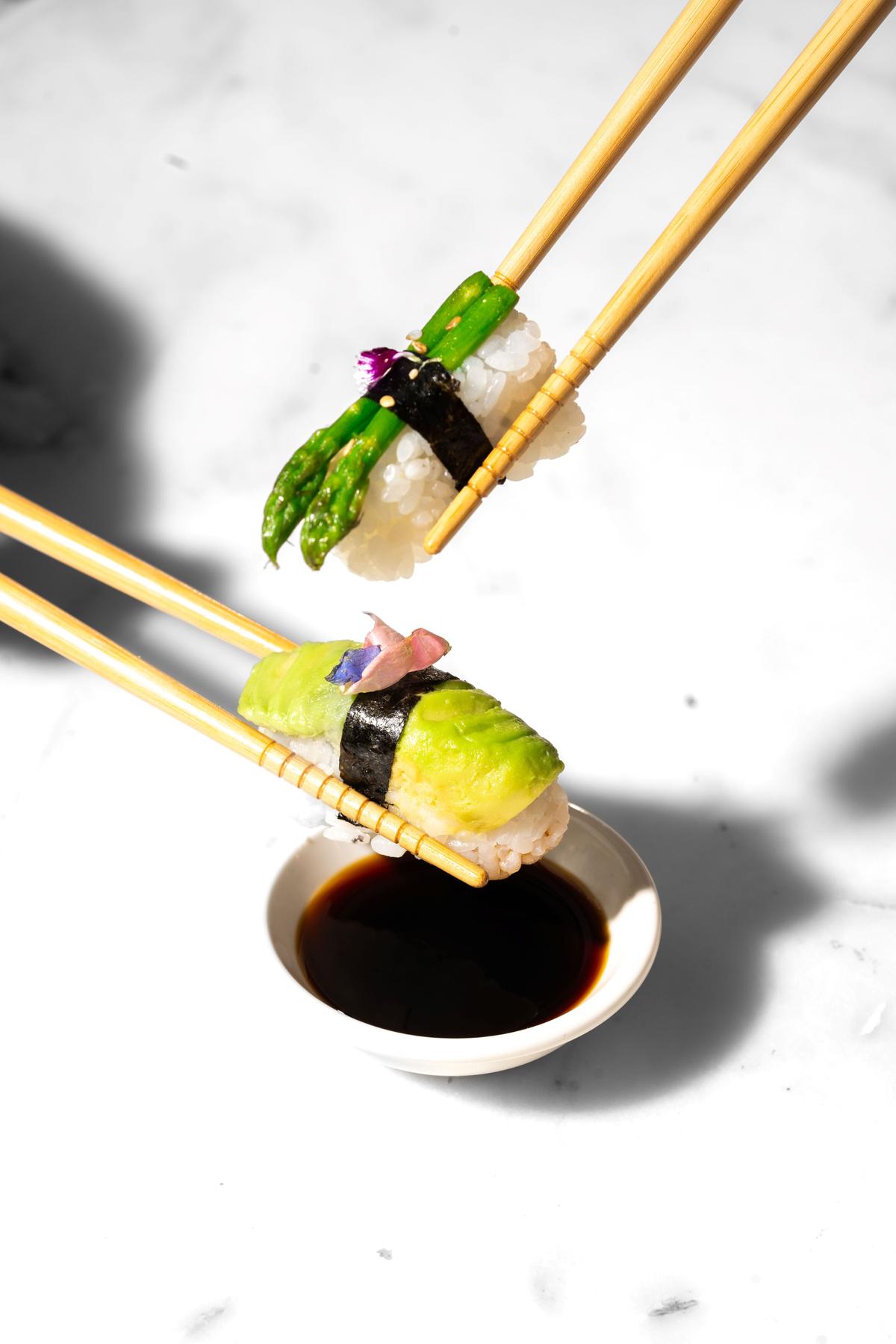
Veg nigiri on Nasi And Mee’s Omakase menu
| Photo Credit:
Special arrangement
For Paul though, omakase irons out the creases when it comes to managing operations in the kitchen, and reduces wastage too. He says, “Omakase is a pre-set meal, it needs required quantities as the number of guest is known and the dishes are also fixed. Koishii has two sit-and-dine slots a day (7.30pm and 10.30pm), omakase is pre-decided. Nearly four to five tables are booked for the experience on weekdays and eight to 10 on weekends. It’s a convenient format of dining for two main reasons: first, it saves the diner the hassle of choosing dishes. Second, since it comes at a fixed-price, it allows the host to manage the budget.”
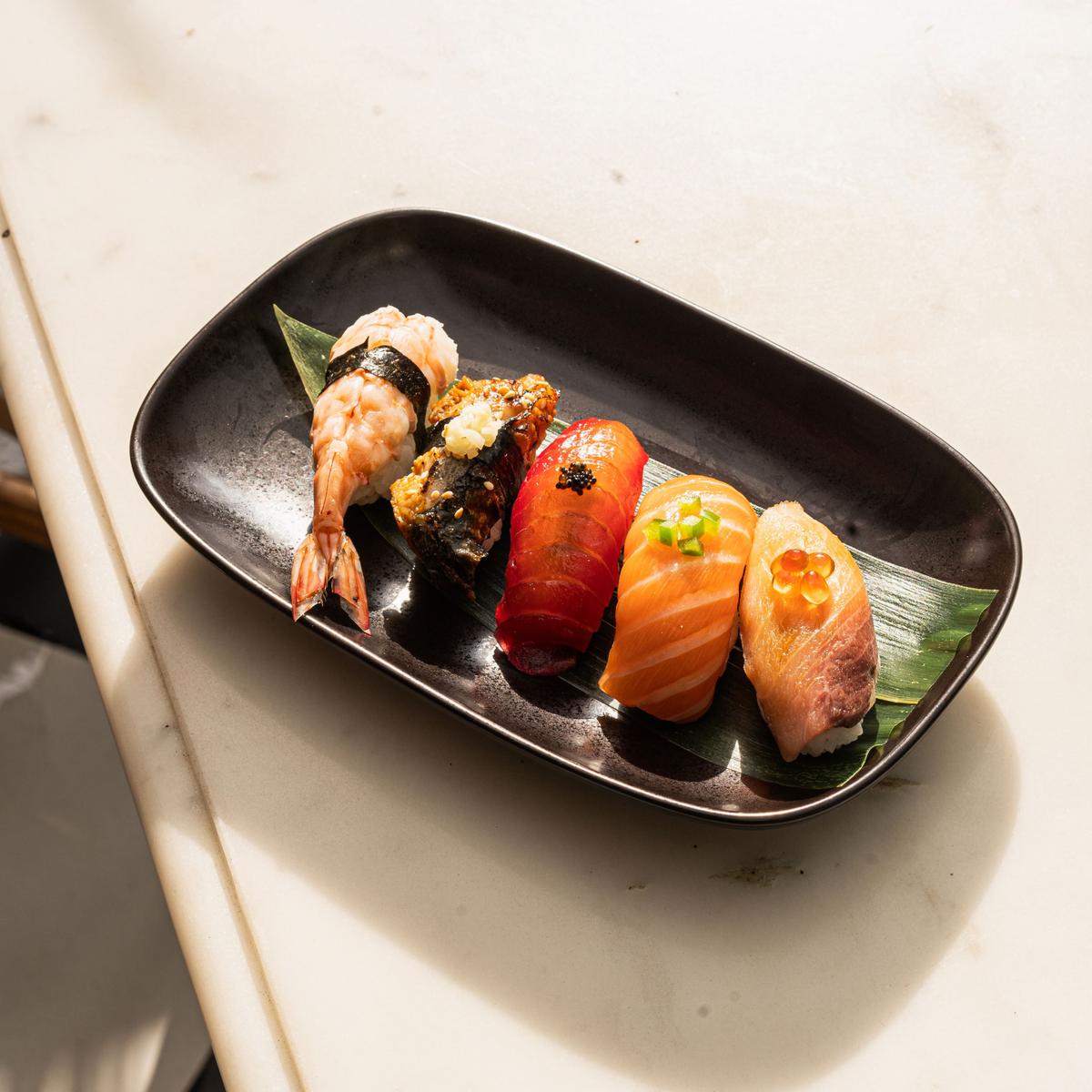
Nigiri mixed on Nasi And Mee’s Omakase menu
| Photo Credit:
Special arrangement
What’s your poison?
Delhi-based bars PCO (Pass Code Only) and Call Me Ten have taken a fancy to omakase as well. In August, last year, I visited PCO, India’s first speakeasy, as it renovated its interiors and launched a new cocktail menu, called The Forbidden. Accompanied with Ignorance Is Bliss, a Chyawanprash-infused bourbon (Chawanprash has been banned in certain countries, which explains its inclusion as the forbidden ingredient in the menu), I entered the bar’s new addition, an omakase counter, on the bar’s top floor.
Since its launch in October, the omakase counter at PCO, which can house nearly 13 guests, has seen a full house
| Photo Credit:
Special arrangement
Since its launch in October, the counter, which can house nearly 13 guests, has seen a full house, says Rakshay Dhariwal, the bar’s co-owner. “We try and gauge the taste profile of our guests through their visual and olfactory preferences and by presenting them with certain cues to help us establish what type of cocktail they would most enjoy. For instance, we may present a range of postcards, with pictures of mountains, beaches etc. and have them choose the one that they resonate with most. Or we offer them half a dozen fragrances and ask them to pick their favourite. We also keep these changing — for instance, for New Years, we asked people what their new year’s resolutions. And, of course, we ask the guest to choose their base liquor. We have a profile of over 85 cocktails which can be created by the mixologist at the counter, depending on the description given by the guests,” he says. A cocktail at PCO’s omakase counter is priced at ₹1,500.
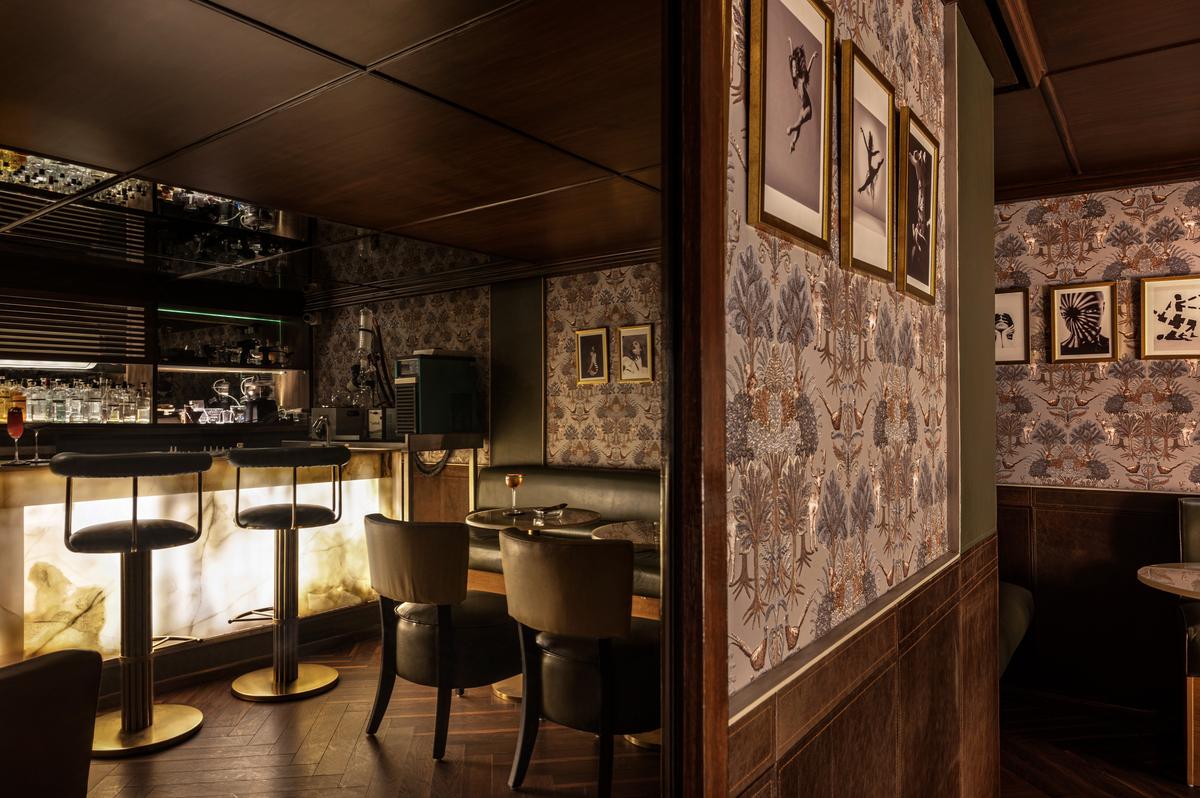
The omakase counter at PCO
| Photo Credit:
Special arrangement
The choice of seven base liquor options (from rum to whisky) at the nine-month-old Call Me Ten comes with seven taste profiles (from umami to sweet) and three levels of potency (strong, light and no preference). The bar’s co-owner, Karann R Chawla, says, “We started the omakase experience at the bar in September. The idea of having an omakase bar is also to educate our guests on different cocktails, spirits and flavours. We have been getting as many as 200 customers a day.” An omakase drink at Call Me Ten is priced at ₹850.
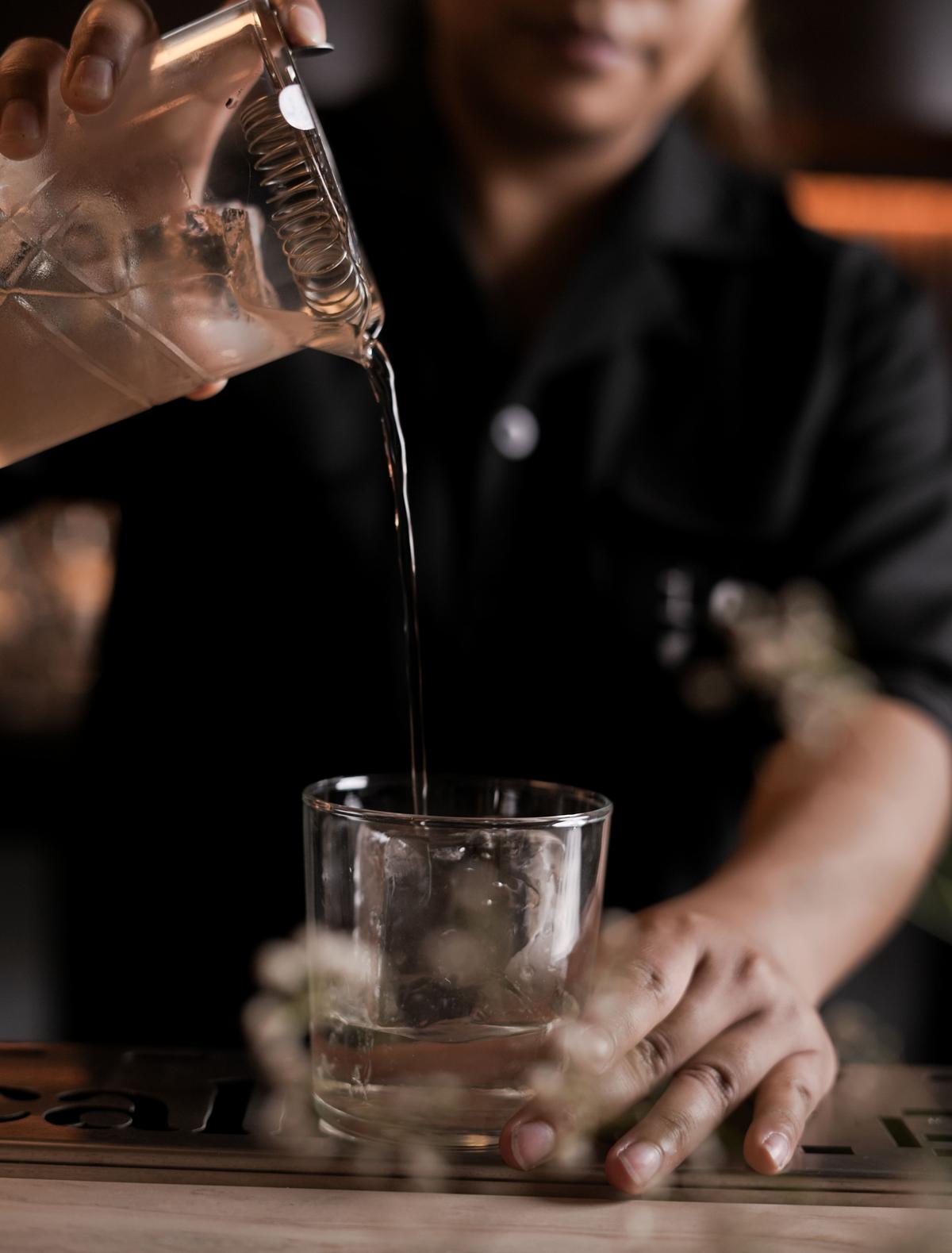
The bartender prepares an omakase cocktail at Call Me Ten
| Photo Credit:
Special arrangement
Since the Michelin Guide describes omakase experience as “revered and intimidating”, it makes for a perfect must-try for adventurous food aficionados. Do you agree?
Published – April 25, 2025 04:34 pm IST
